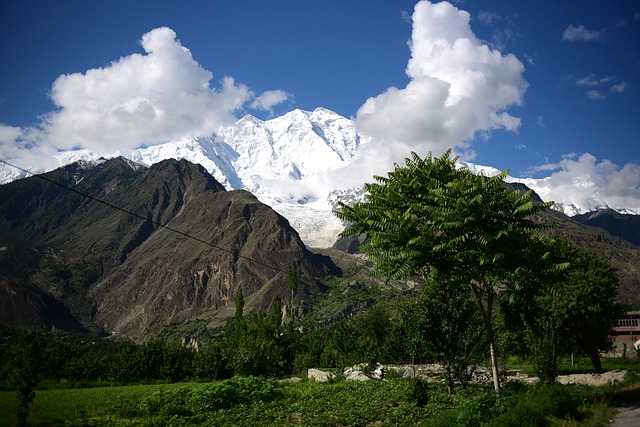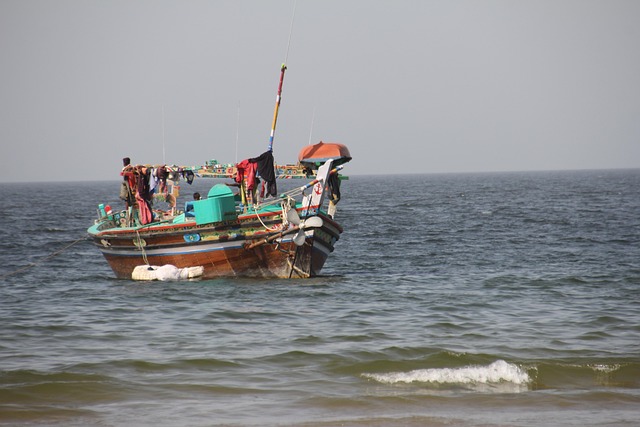pakistan
Pakistan: Unveiling a Nation’s Journey, Impact, and Future Potential
Introduction
Welcome to an extensive exploration of Pakistan—a vibrant nation located in South Asia, with a rich history, diverse culture, and significant global influence. This article aims to provide an in-depth understanding of Pakistan, its multifaceted aspects, and the impact it has on both regional and international spheres. By delving into various sectors, from economics and technology to policies and challenges, we will uncover the key drivers shaping Pakistan’s present and future trajectory.
Understanding Pakistan: A South Asian Metropolis
Definition and Composition:
Pakistan, officially known as the Islamic Republic of Pakistan, is a federal parliamentary republic comprising four provinces and a federal capital territory. It is bordered by India to the east, Afghanistan to the west, Iran to the southwest, and China in the far northeast. The country spans an area of approximately 881,913 square kilometers (340,509 square miles), making it slightly larger than the state of New Mexico in the United States.
Historical Context:
The origins of Pakistan can be traced back to the partition of British India in 1947, when the Muslim-majority regions of the subcontinent gained independence from colonial rule. This event was marked by significant political and social upheaval, leading to the creation of two separate nations: India and Pakistan. The new nation’s founding fathers envisioned a state based on Islamic principles, democracy, and national unity.
Significance:
Pakistan holds immense geopolitical importance due to its strategic location, rich natural resources, and diverse population. It is a member of several international organizations, including the United Nations (UN), World Trade Organization (WTO), and Shanghai Cooperation Organization (SCO). The country’s vibrant culture, historic sites, and diverse landscapes attract tourists from around the world, contributing to its economy.
Global Impact and Trends
Regional Influence:
Pakistan plays a pivotal role in South Asian politics and economics. It has been at the forefront of regional cooperation initiatives, such as the South Asian Association for Regional Cooperation (SAARC), aiming to promote trade, cultural exchange, and political unity among member states. The country’s strategic position also makes it a key link in global supply chains, particularly in the transport and logistics sector.
Economic Trends:
The Pakistani economy has experienced fluctuations but has shown resilience and growth potential. Key sectors driving economic activity include agriculture, textiles, information technology (IT), and services. According to the World Bank, Pakistan’s Gross Domestic Product (GDP) grew at a rate of 4.5% in FY2021, demonstrating its economic vitality. The country’s vibrant entrepreneurial ecosystem attracts foreign investments, particularly in technology startups and renewable energy projects.
Global Security and Diplomacy:
Pakistan’s strategic importance extends to global security matters. It has been actively involved in regional security initiatives and peacekeeping missions, contributing troops to UN peacekeeping operations worldwide. The nation’s foreign policy has focused on fostering diplomatic ties with neighboring countries and major global powers, ensuring its place on the international stage.
Economic Considerations: A Flourishing Marketplace
Market Dynamics:
Pakistan boasts a diverse and dynamic market economy, characterized by a mix of traditional sectors and modern industries. Agriculture remains a cornerstone of the economy, employing approximately 45% of the population (World Bank, 2021). The country is known for its textile industry, which is one of the largest employers and a significant contributor to exports. Additionally, Pakistan has made strides in information technology, with a thriving startup ecosystem and offshore IT services sector.
Investment Opportunities:
The Pakistani government has implemented various measures to attract foreign direct investment (FDI). Special Economic Zones (SEZs) offer tax incentives and streamlined regulations for businesses, encouraging investment in sectors like electronics, pharmaceuticals, and renewable energy. The country’s rich natural resources, including mineral-rich deposits and fertile agricultural land, further enhance its appeal to investors.
Economic Challenges:
Despite its potential, Pakistan faces economic challenges, such as high inflation rates, a widening current account deficit, and public debt. These issues are exacerbated by political instability and security concerns. However, the government has been implementing structural reforms, including financial sector development and privatization, to address these problems and create a more sustainable economic environment.
Technological Advancements: Digital Revolution in Progress
IT Industry Growth:
Pakistan’s information technology sector has experienced remarkable growth over the past decade. The country has established itself as a global hub for IT-enabled services, attracting multinational corporations and fostering local talent. According to a report by the Pakistan Software Export Board (PSEB), the IT industry contributed approximately 2% to the country’s GDP in 2021, with exports totaling over $3 billion.
Startup Ecosystem:
The startup culture in Pakistan is thriving, driven by a young, tech-savvy population and supportive government initiatives. Incubators and accelerators across cities like Karachi, Lahore, and Islamabad provide mentorship, funding, and networking opportunities for entrepreneurs. Notable success stories include mobile financial services (m-pesa) provider M-Pesa, which has transformed digital payments in Africa, and several e-commerce startups that have gained regional traction.
Telecom Sector:
Pakistan’s telecommunications sector is among the most advanced in South Asia, with widespread mobile network coverage and rapid internet penetration rates. According to the International Telecommunication Union (ITU), Pakistan achieved over 70% 4G LTE coverage in 2020, positioning it among the leaders in digital connectivity in the region. This has facilitated e-commerce growth and enabled remote work opportunities.
Future Technologies:
The Pakistani government has shown a strong commitment to fostering technological innovation. Initiatives like the National Artificial Intelligence Project (NAIP) aim to establish Pakistan as a leader in AI development and applications. Additionally, there is growing interest in space technology, with plans for satellite launches and the establishment of a national space agency. These advancements could open doors to new economic opportunities and enhance the country’s global standing.
Policy and Regulation: Shaping Development
Legislative Framework:
Pakistan operates under a federal parliamentary system, where the constitution serves as the supreme law. The government is structured with three branches: executive, legislative, and judicial. Key policies and regulations governing various sectors include the Income Tax Act, 1973; the Companies Ordinance, 2017; and the Industrial Relations Act, 1969. These legal frameworks play a crucial role in shaping business environment, investment incentives, and labor rights.
Investment Policies:
To encourage foreign investment, Pakistan has implemented various policies, including tax holidays, duty-free imports, and simplified regulatory procedures within SEZs. The government’s Private Sector Development Initiative (PSDI) focuses on improving the ease of doing business by streamlining bureaucratic processes and enhancing infrastructure. These measures have contributed to a positive investment climate, fostering economic growth and job creation.
Regulatory Challenges:
Despite efforts to modernize regulations, Pakistan faces challenges in ensuring effective governance and rule of law. Red tape, bureaucratic delays, and inconsistent policy implementation hinder business development. Addressing these issues is essential for attracting long-term investments and fostering a robust entrepreneurial ecosystem.
Challenges and Criticisms: Overcoming Setbacks
Political Instability:
One of the primary challenges Pakistan faces is political instability, characterized by frequent changes in government and policy reversals. This uncertainty discourages both domestic and foreign investment, hampering long-term development plans. Strengthening democratic institutions and fostering political consensus are crucial steps towards building a more stable environment for economic growth.
Security Concerns:
Terrorism and security-related issues have been major obstacles to Pakistan’s progress. The country has faced challenges from extremist groups and internal conflicts, impacting tourism, trade, and foreign investment. However, the government has made significant efforts to combat terrorism through security operations and strengthening law enforcement agencies. Improved security conditions are essential for attracting international businesses and promoting economic diversification.
Energy Shortages:
Pakistan struggles with energy shortages, particularly electricity, which hinder industrial growth and daily life. The gap between supply and demand has led to load-shedding (power cuts) across the country. While the government has embarked on several energy infrastructure projects, addressing this challenge remains a top priority to ensure sustainable economic development.
Education and Skilled Workforce:
Despite progress, Pakistan’s education system faces challenges, including low literacy rates, inadequate access to quality education, and gender disparities. Investing in education and skill development is vital for building a competitive workforce capable of driving innovation and meeting the demands of a rapidly changing economy.
Case Studies: Successful Applications and Lessons Learned
Case Study 1: Information Technology Park, Karachi:
The establishment of the Pakistan Software Export Board (PSEB) has been a significant success story in the IT sector. PSEB’s initiative to create technology parks, such as the Karachi Software Export Zone (KSEZ), provided a conducive environment for IT companies to set up shop and access global markets. This resulted in substantial job creation, technology transfer, and foreign exchange earnings for the country. The case highlights the importance of government-led initiatives in fostering industrial growth.
Case Study 2: Agri-Tech Innovations:
Pakistan’s agricultural sector has embraced technological advancements, leading to improved farming practices and increased productivity. Precision farming techniques, driven by data analytics and IoT (Internet of Things) devices, help farmers optimize crop yields and reduce waste. The government’s support for Agri-tech startups and research institutions has played a pivotal role in this transformation. This case study demonstrates the potential of combining technology with traditional sectors to drive economic growth.
Lessons Learned:
- Government-Private Sector Collaboration: Successful initiatives often involve strong partnerships between the government and private sector, leveraging each other’s strengths for mutual benefit.
- Invest in Human Capital: Educated and skilled individuals are the backbone of any nation’s progress, and investing in education is crucial for long-term development.
- Adoption of Technology: Embracing technological innovations can revolutionize traditional sectors, enhance productivity, and open new avenues for economic growth.
- Addressing Security Concerns: Ensuring a secure environment is essential for attracting investment, promoting tourism, and fostering social stability.
Future Prospects: Navigating the Horizon
Emerging Trends:
- Green Economy: Pakistan has an opportunity to lead in sustainable development by focusing on renewable energy sources, energy efficiency, and eco-friendly practices, especially with its vast agricultural sector.
- Digital Financial Services: The country’s digital revolution is set to transform financial services, with mobile banking and fintech startups gaining traction. This trend could improve financial inclusion and enhance the overall digital economy.
- Healthcare Innovation: Pakistan’s healthcare sector is witnessing advancements in telemedicine, digital health records, and medical tourism, presenting opportunities for growth and improved access to quality healthcare.
Strategic Considerations:
- Diversification and Industrialization: Further diversifying the economy away from traditional sectors can reduce vulnerabilities to global market fluctuations. Promoting industrialization and manufacturing will create more job opportunities and ensure long-term economic stability.
- Infrastructure Development: Investing in robust infrastructure, including transportation, energy, and digital connectivity, is vital for facilitating trade, tourism, and business operations.
- Talent Retention and Education: Retaining skilled talent and attracting foreign experts can contribute to knowledge transfer and innovation. Enhancing education systems to meet industry demands will ensure a competitive workforce.
Conclusion: A Nation’s Journey and Global Impact
Pakistan has come a long way since its inception, transforming from a newly independent nation into a vibrant, diverse, and resilient country. Its rich cultural heritage, strategic location, and talented population have positioned it as an important player on the global stage. Through navigating political challenges, fostering technological advancements, and implementing effective policies, Pakistan continues to shape its destiny and contribute to regional and international development.
The nation’s journey highlights several key takeaways:
- Resilience and Adaptability: Pakistan’s ability to adapt to changing geopolitical dynamics and economic trends has been remarkable.
- Potential in Diversity: The country’s diverse population and cultural tapestry offer a rich source of talent, creativity, and innovation.
- Economic Opportunities: From agriculture to technology, Pakistan presents diverse economic sectors with growth potential, attracting global investors.
- Global Citizenship: Pakistan’s active participation in international organizations and peacekeeping missions underscores its commitment to global cooperation and peace.
FAQ Section: Answering Common Queries
Q: Is Pakistan a democratic country?
A: Yes, Pakistan operates as a federal parliamentary republic with regular elections and a multi-party system. However, it has experienced periods of military rule and political instability.
Q: What are the main languages spoken in Pakistan?
A: The official language is Urdu, but English is widely used in education, business, and government. Other regional languages, such as Punjabi, Sindhi, Pashto, and Balochi, are also spoken across different parts of the country.
Q: How does Pakistan contribute to global security?
A: Pakistan actively participates in regional and international peacekeeping efforts through its contribution to UN peacekeeping missions. It has also been involved in counter-terrorism initiatives, both domestically and internationally.
Q: What are some popular tourist attractions in Pakistan?
A: Pakistan offers a range of attractions, including historical sites like the Mohenjo-daro ruins and the Taj Mahal; natural wonders such as the Karimabad valley and Hunza mountains; and vibrant cities like Karachi, Lahore, and Islamabad with their rich cultural heritage.
Q: Is the economy of Pakistan primarily agriculture-based?
A: While agriculture is a significant sector, Pakistan has diversified its economy over the years. Services, particularly IT and business process outsourcing (BPO), have emerged as major contributors to GDP, alongside manufacturing and construction.













